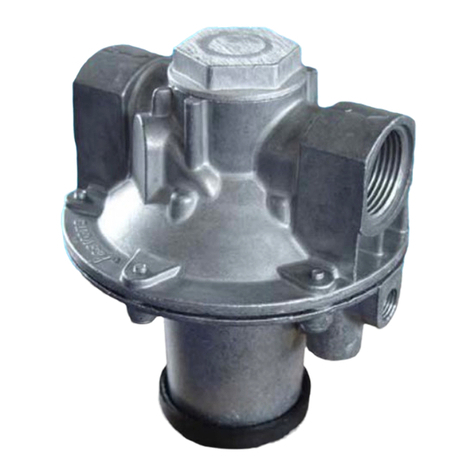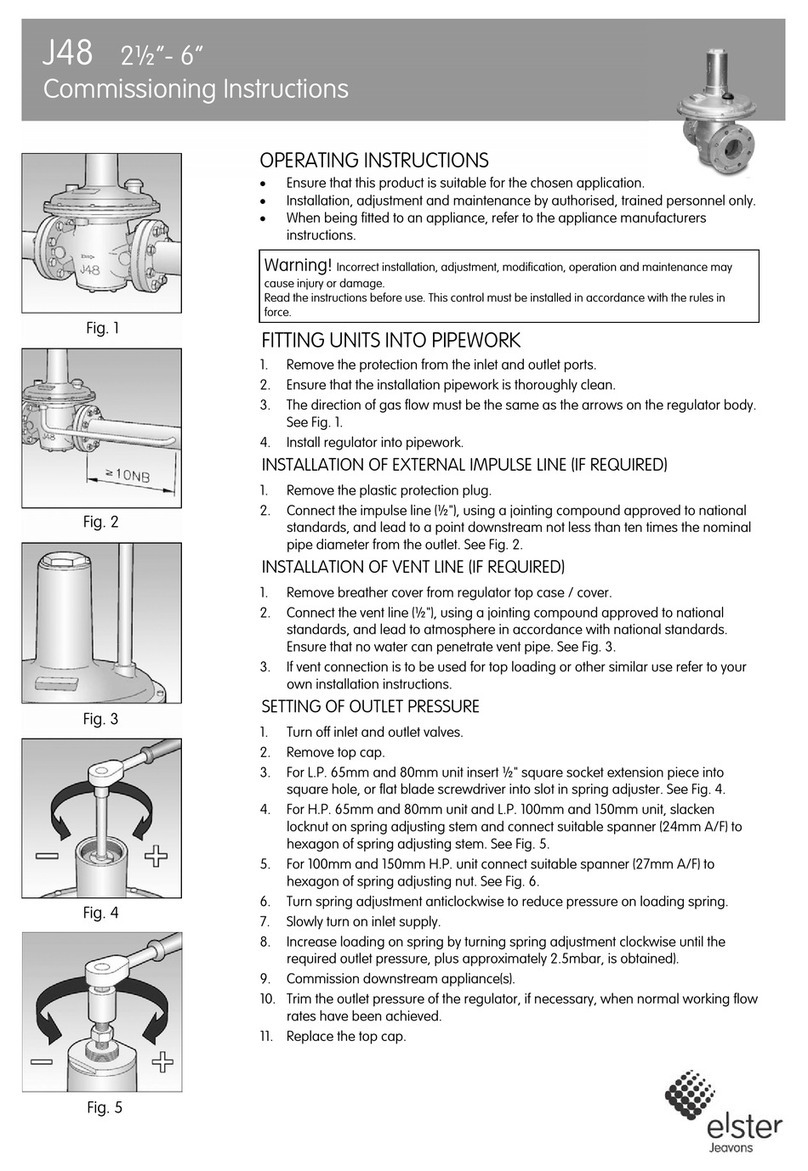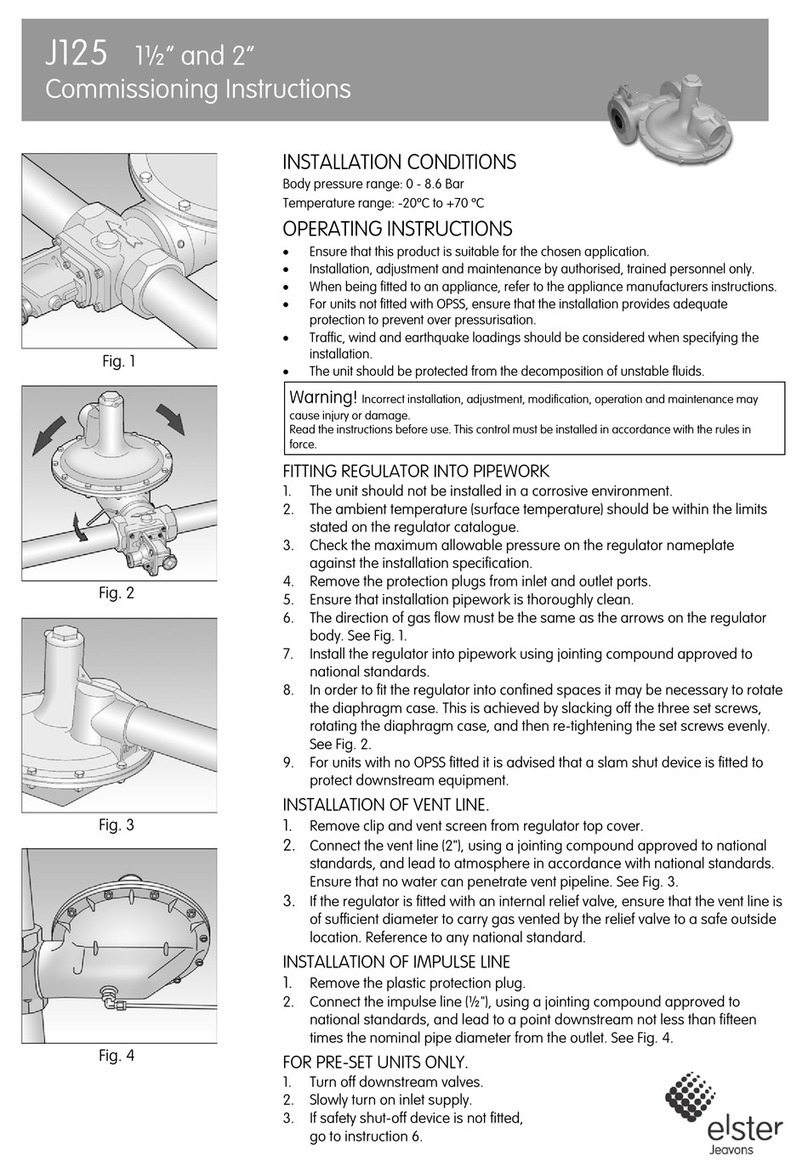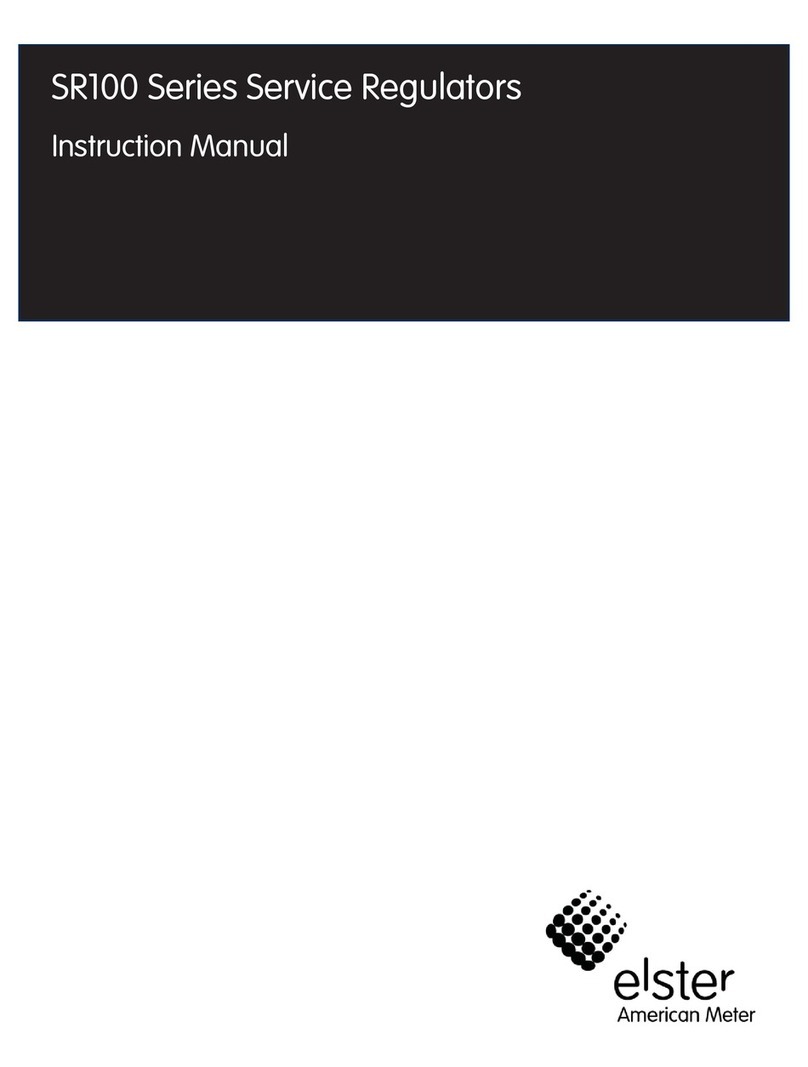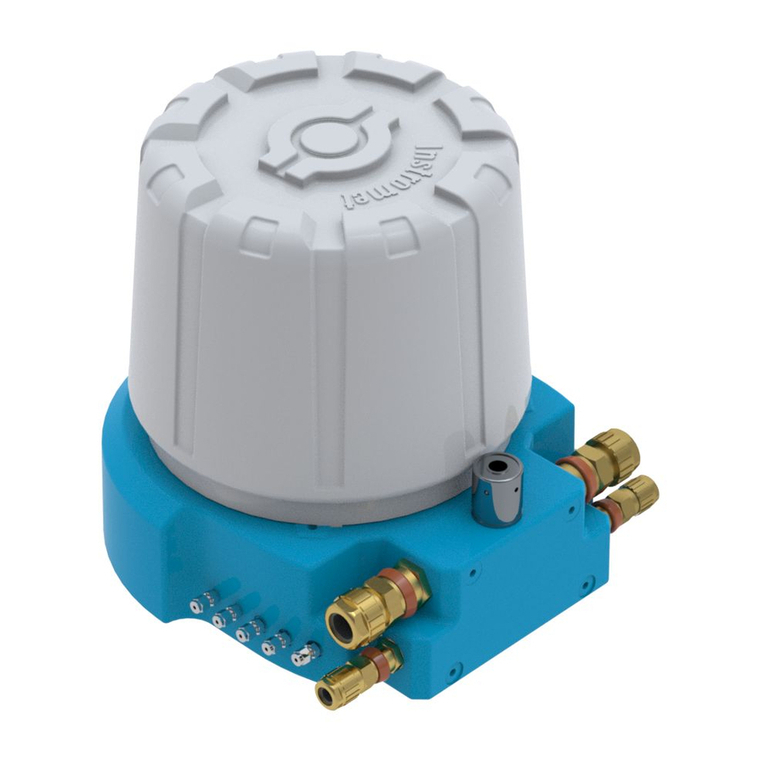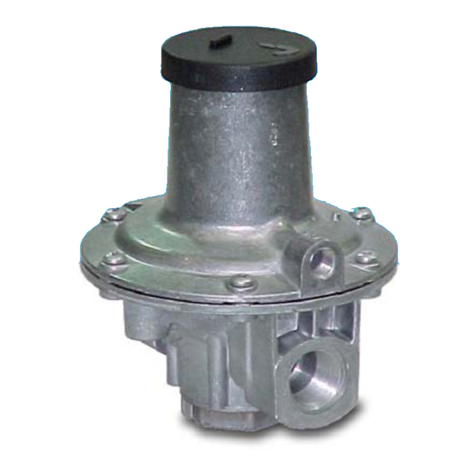
3
J125B: Commissioning Instructions
4. If safety shut-off device is fitted unscrew reset spindle end cap and
firmly pull. Hold in this position until the outlet pipework is fully
pressurised, then release reset spindle end cap gently. See Fig. 5.
5. Re-screw reset spindle end cap into body, ensuring not to jam reset
spindle.
6. Commission downstream appliances.
WARNING: DO NOT UNDER ANY CIRCUMSTANCES WEDGE OPEN SAFETY
SHUT-OFF RESET END CAP AS THIS WILL NOT ALLOW THE SAFETY DEVICE(S)
TO FUNCTION IN ADVERSE PRESSURE CONDITIONS.
SETTING THE REGULATOR & SAFETY
SHUT OFF DEVICE PRESSURES.
OPSS = Over Pressure Safety Shut-off.
UPSS = Under Pressure Safety Shut-off.
1. Turn off inlet and outlet valves.
2. Remove top cap from regulator cover.
3. Insert an 11/4" A/F socket over the top of the adjustment screw.
4. Turn anticlockwise (-) to reduce loading on regulator spring to
minimum. See Fig. 6 (If no safety devices are fitted go to instruction 10).
5. Remove top cap from safety shut-off device cover (If UPSS only go to
instruction 8).
6. Insert a flat bladed screwdriver into one of the partial slots on the
OPSS spring holder. See Fig. 7.
7. Turn clockwise (+) to increase loading on OPSS spring to maximum.
8. If UPSS fitted, insert a pozidriv screw driver (No.2 point) into UPSS
adjusting screw in bottom spring holder. See Fig. 8.
9. Turn anticlockwise (-) to reduce loading on UPSS spring, making sure
screw head does not protrude from the bottom spring holder.
10. Slowly open inlet valve(s).
11. If safety device fitted, re-cock by unscrewing reset spindle end cap
and pulling firmly. Hold in this position until the outlet pipework is fully
pressurised, then release reset spindle end cap gently. Re-screw
reset spindle end cap into body. See Fig. 5.
12. Turn regulator adjustment screw clockwise (+) to increase the loading
on the spring until the required outlet pressure, plus approximately
2.5mbar (1"wg) is obtained. (This is an allowance for the regulator
being set with zero flowrate).
If UPSS only go to instruction 20, if no safety device go to instruction 27.
13. Block vent valve opening to prevent relief valve from operating.
14. Apply external pressure source to a suitable point on the outlet
pipework. Increase pressure to that required for OPSS trip-off.
Note: If pressure test point on underside of slam shut unit is used as
external source point, care must be taken to ensure pressures are
equalised across restricted orifice within test point.
15. Slowly turn OPSS spring holder anticlockwise (-) until OPSS device trips
off. See Fig. 7.
16. Reduce external pressure source to level set in instruction 12.
Fig. 5
Fig. 6
Fig. 7






